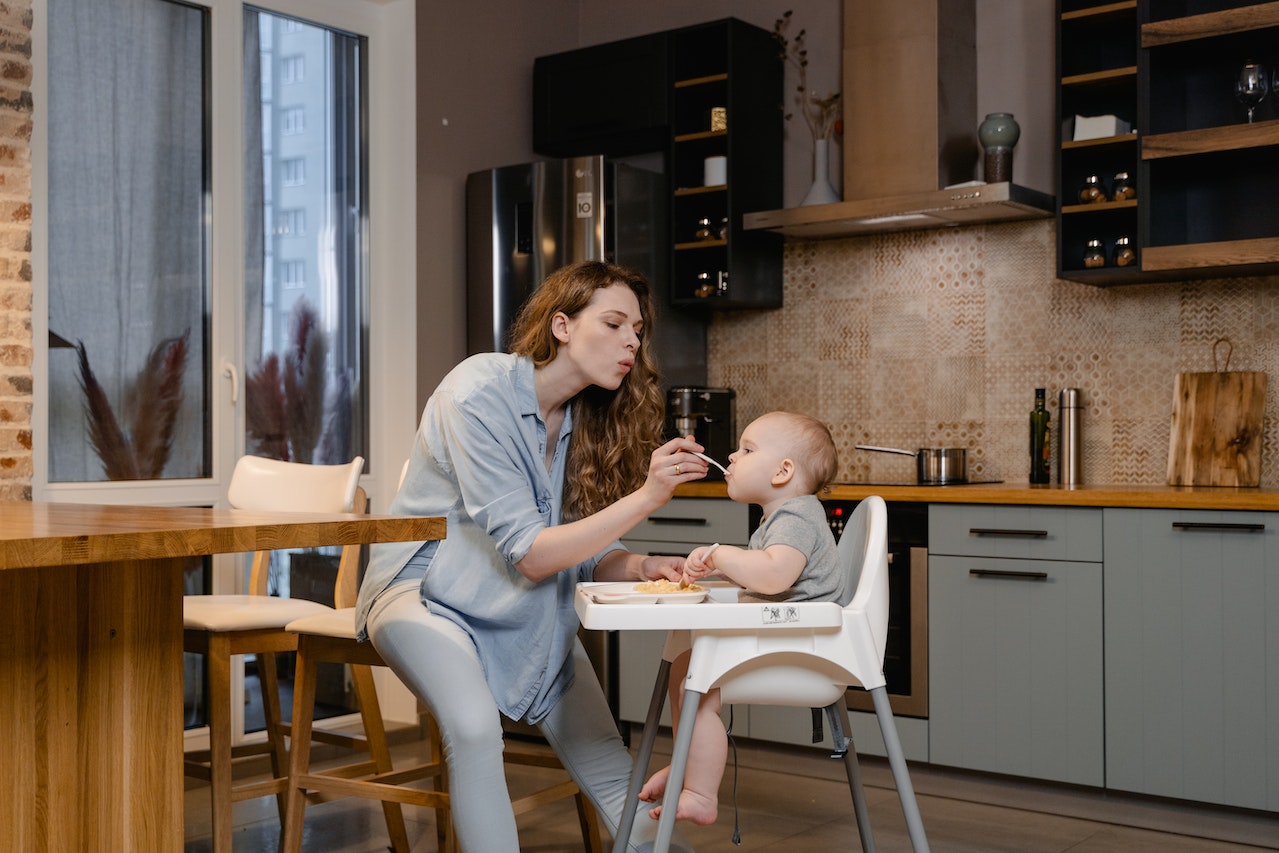Recycling household items can lead to a cleaner and greener environment. Recycling and reusing items can also help produce less trash that goes into landfills, ultimately harming our soil, air, and water.
Read these DIY upcycling tips and ideas from our experts and keep them close at hand. This way, you and your family stay busy, and the planet cleaner.
How can we reduce food waste at home and slow down climate change?
Urbanites can use food waste reduction methods to maximize the supply of food and to reduce waste and ecological degradation. City dwellers actually have abundant resources available to them to save food for future household consumption, to gather food for charity, and to compost food scraps. Means to save household food include efficient meal prep and meal planning, effective storage containers for leftovers, and preserving essential food items that can be stored in large quantities. Instead of designating food as simply waste, consider donating food to community food banks or local urban food recovery programs.
Daniel Braff from Green City Times™, LLC
The first step in leading a more sustainable lifestyle is to adopt a different way of thinking about the way we produce and consume. This way of thinking helps to promote the idea of a circular economy in all aspects of our lives, especially cleaning. Circularity might look like finding a refillable cleaning option, turning old shirts into cleaning rags, or transitioning from laundry detergent to plastic-free sheets or powder.
Living sustainably looks different for each of us but choosing to rethink, reduce, and reuse before recycling or disposing of products is essential to achieving zero waste cleaning
Nicolle Portilla from RTS
What are the best eco-friendly cleaning products to use at home?
We believe in our entire eco-friendly Skoy product line. The Skoy Cloth is 100% biodegradable and compostable – why not use this instead of a regular sponge? This one product will save you money and the environment. As far as cleaning sprays, we suggest buying a concentrate to help eliminate bulk plastics!
Michelle Lundqvist from Skoy Enterprises LLC
What are some sustainable lifestyle aspects everyone can incorporate in their life?
When it comes to living a sustainable lifestyle, there is no one shortcut but it’s about a lifetime commitment to ourselves to take mindful decisions about how to inculcate a healthier relationship with ourselves and the planet. Here are some of the few ways by which we can create less negative impact on the environment.
- Household- Remember the 3R’s. Reduce. Reuse. Recycle. Using products that fit the 3R’s will not only minimize waste but also impact the environment positively. Apart from that, techniques like Waste Management, Waste Segregation, Rainwater Harvesting can also help to produce minimum to zero waste.
- Clothing- Adopting slow fashion by buying clothes that can last us for years can save so much of our money, time and resources.
- Gifting- Giving sustainable or handmade gifts on birthdays, festivals and special occasions can often invigorate a warm sense of satisfaction in the end of the receiver.
- Commuting- Walking or taking a bicycle ride for nominal distances can keep us healthy and our carbon footprint at bay.
Simar Mann from Sankalp Taru
Could you give us some tips on saving water at home and help the planet?
- Make sure to close the tap when you complete using it.
- Try to wash more clothes at once in the washing machine.
- Use wastewater for plants.
- Construct a soak pit to collect wastewater and increase the layer of groundwater.
- Check for any pipe leak in your house.
Sanjay from Muzcorner
What are the best eco-friendly backyard planting and gardening tips?
Plant for pollinators! For butterflies, plant both nectar (food) and host plants (where they lay their eggs). Use only organic products and no chemical insecticides. Before long your yard will be full of beautiful pollinators!
Carol Clark Montgomery from Clark Gardens
How to recycle and reuse your toner cartridges to help the planet?
Toner cartridges can be refilled and remanufactured and almost every cartridge out there has a chip inside that allows it to work only once, so its components are useful for many purposes after the initial use is finished. Toner Cartridges contain plastic parts,
metal parts, rubber parts, and plenty of empty space that can be used to store other useful materials.
If you have a printer at home or work, chances are you have some ink cartridges taking up space in your cabinet or closet. Inkjet cartridges may seem useless once the ink is dry and they may not be as expensive as toner cartridges, but they still contain plenty
of recoverable resources. It is estimated that about 12 million inkjet cartridges are thrown into the garbage each year nationwide.
The fact is that every kind of printer cartridge can be remanufactured and recycled, but you need to do your research before throwing them away in the trash. Remanufacturing simply means taking all reusable parts out of one used cartridge and putting them into
another, similar cartridge. Toner cartridges are remanufactured by companies that buy empty cartridges and replace their parts with new ones. Reprocessing is a slightly different process that involves taking all reusable components out of the old cartridge
(such as plastic, metal and rubber) and making them available for future use.
Alberto Palumbi from Premium Toners
What are the best recommendations for recycling and handle household waste?
Understand what is in your trash that can be recycled, whether it cardboard, paper, plastics, metals, or textiles. Americans tend to recycle only 30% of our garbage! Talk with your curbside recycler or municipality to see which commodities they accept and any requirements for storage or hauling.
Lane Powell from Harmony Enterprises
What are the best steps to take towards sustainable shopping?
There are a number of steps one can take to ensure sustainable shopping. To start, try to be mindful of your actions at all times. Learn about the different types of waste that are generated and don’t make unnecessary purchases. Choose local produce instead of imported and always carry a sustainable shopping bag for the items you are buying. These small changes can help greatly, especially if they become habitual over time.
Megan Kioulafofski from Sol+Spirit
Why choose a vegan belt?
Leather belts are not ethical or sustainable. This is because they’re made from an animal byproduct; millions of animals are killed just for leather alone every year. Not only is it cruel, but it’s also horrible for the environment. The tanning process for leather uses around 250 toxic chemicals, including cyanide, arsenic, and chromium.
Switching to use vegan, sustainable belts minimize the environmental impact because of the use of eco-friendly materials from cotton, canvas, and hemp to banana leaves, cork, and more.
You may also find that these products are made with upcycled materials like kite sails, bicycle tires, cement bags, and recycled feed bags, to name a few, which keep them out of landfills and the environment, where they might hurt local wildlife.
These are the benefits of vegan belts:
- It’s animal-friendly and cruelty-free.
- Environmental friendly and sustainable.
- Getting items made to order. There’s no material wastage. All sizes and parts are cut according to the product’s needs.
- Reduces pollution. Vegan materials cause less CO2 and greenhouse emissions than leather made from animals.
- Reduces toxic chemical use.
- Cost-effectiveness. Vegan leather is easier to maintain and waterproof: animal leather is not waterproof, and maintenance can be expensive.
Paras Doshi from Doshi
How can we strive towards zero waste cooking and a sustainable kitchen at home?
Our kitchens are responsible for a huge amount of household waste. Making them zero waste is a big challenge, but it is possible.
The vast majority of waste generated in our kitchens comes from food, packaging and cleaning products. The biggest thing you can do to reduce waste coming from your kitchen is pay attention to the food that you buy, be creative and use what you have. By making use of what we have in our fridges, cupboards and freezers we reduce the amount of food that goes stale.
Another great tip is to shop at sustainable grocery stores or zero waste shops. Let’s be honest, it’s very difficult to source absolutely everything you need in your home sustainably, but visit your local zero waste shop and you might find that it’s easier and cheaper to buy bulk staples there instead of in plastic packaging at your nearest supermarket.
Finally, washing up is a hugely wasteful household chore. Try switching to eco friendly dish soap and reusable bamboo washing up brushes. By doing this, you’re pretty much kicking your washing up waste to the curb and as an added bonus, it makes a typically dreaded household job feel a little bit fun!
Jamie from Jungle Culture
How does consuming and purchasing recycled products make a difference in climate change?
An easy way individuals can make a real difference in the fight against climate change is to buy recycled products. Using recycled materials decreases our reliance on virgin materials that require energy-intensive extraction and processing. Plus, recycling reduces the amount of material that ends up in landfills, a significant contributor to greenhouse gas emissions.
Sarah Winkler from Everyday Recycler
What are the top things you can do from home to act towards the negative impact of climate change?
- Make more use of your outdoor space. The more time you spend outside your home, the less energy has to be used inside the home to entertain you and keep you comfortable.
- Choose fans over air conditioning. Ceiling fans and pedestal fans use much less electricity than air conditioning. In addition, they won’t dry out your skin!
- Make the most of renewable energy. By using our appliances which use the most electricity during the day (washing machines, dishwasher, pool filter etc.), we are using renewable energy over fossil fuels. Where you live could have a different renewable energy profile – perhaps you have lots of wind farms feeding into your grid and they receive the most wind during the early evening.
- Use less. Of anything and everything! Less water, less food (I’m not even saying to eat less, just don’t waste so much), less electricity, less clothes. It doesn’t matter what it is, every consumable takes energy and materials to get it to your door. The less you use, the more the planet benefits. You can start by aiming to use just 5% less of some things. Take a slightly shorter shower. Mend an item of clothing instead of buying something new. Go for a walk instead of sitting down to watch television. Using just a little bit less of things is actually quite easy!
Dr. Mahdi Mason from Mahdi Mason
Could you give us your best tips on how to create an eco-friendly/sustainable home office?
The best tips for creating a sustainable home office are to utilize furniture and decor that you already have, or repurpose materials to create the office environment you would like. Turn off and unplug when you are done in your office and be conscientious of whatever natural light you can incorporate when creating your space. Be sure to include some plants as well in your environment and keep your area organized and clutter free.
Ashley Doran from Vapur
What are the most essential tips for beginners to start a zero-waste lifestyle?
The easiest way to get started is to take stock of products in your own home – if you’re not going to use something, don’t throw it out or let it expire; give it to someone that can use it. Don’t go out and buy anything new until you’ve used up what you have, whether it is “zero waste” or not. Wear the clothing in your own closet, address any over-shopping or over-consumption behaviors, and begin trying to source things that are second hand or reused instead of buying new. Use the time you need while using up products you already have to learn about alternatives, so that when it is time to buy, you can buy with intention.
Ange Defosse from Harlowe Green
What steps can you take to reduce waste and begin your journey towards a zero-waste lifestyle?
To transition towards a zero-waste lifestyle, follow these steps:
- Embrace the “Three Rs”: Reduce, Reuse, and Recycle. Avoid single-use items and favor reusable alternatives. Repurpose items when possible.
- Adopt mindful shopping habits. Choose products with minimal packaging and opt for bulk options. Support eco-friendly businesses.
- Compost organic waste like food scraps and yard trimmings to reduce landfill contributions and create nutrient-rich soil.
- Understand local recycling guidelines and avoid contaminating recycling bins.
- Minimize food waste through meal planning, creative leftovers usage, and food donations to those in need.
- Spread awareness and inspire others to join the zero-waste movement. Community engagement and sharing tips can create a more significant impact.
By following these steps, you can make a significant difference in waste reduction and contribute to a sustainable future.
Edi from Mimoni
What are some sustainable ways to dispose of or repurpose empty pallets after a delivery?
If you find yourself with empty pallets after a delivery of sod, large appliances, or other bulk materials, there are several ways to handle them sustainably. The simplest solution is to ask the delivery provider if they can take them back immediately or if they offer a return pickup service. In some cases, pallets may have a deposit that you can reclaim by returning them to the supplier. If that’s not an option, consider placing them at the curb with a “free” sign or listing them on platforms like Facebook Marketplace, where they are often in demand.
Additionally, many DIY enthusiasts and crafters repurpose free pallets into furniture, garden beds, or home décor projects, making them a great resource for creative reuse.
Rick LeBlanc from PackagingRevolution.net
What is the Most Sustainable Way to Deal with Cardboard Packaging?
The best way to sustainably use cardboard packaging is to reuse it. You can reuse the materials for different objectives, such as utilizing left-over boxes to store workplace equipment. This assists in decreasing waste and also protecting against the unneeded acquisition of items.
Using recyclable products assists you in transforming them into various other items that can be effectively utilized later. In addition, this guarantees that the product packaging products do not go to waste or the landfills once they are thrown out.
Minimal product packaging helps minimize product use, bringing about minimized product cost. So, accept simpleness along with creative thinking to find up with an appealing and also minimalistic style. You can even ensure that the product packaging stems from a sustainable resource.
All the above techniques would transform your cardboard material into a sustainable resource even after it is of no use. As we know, cardboard is already biodegradable, so if you even dispose of it at the end, it will not be of any more significant loss to the ecosystem.
We are sure that the above-detailed answer will help you use your packaging more sustainably.




